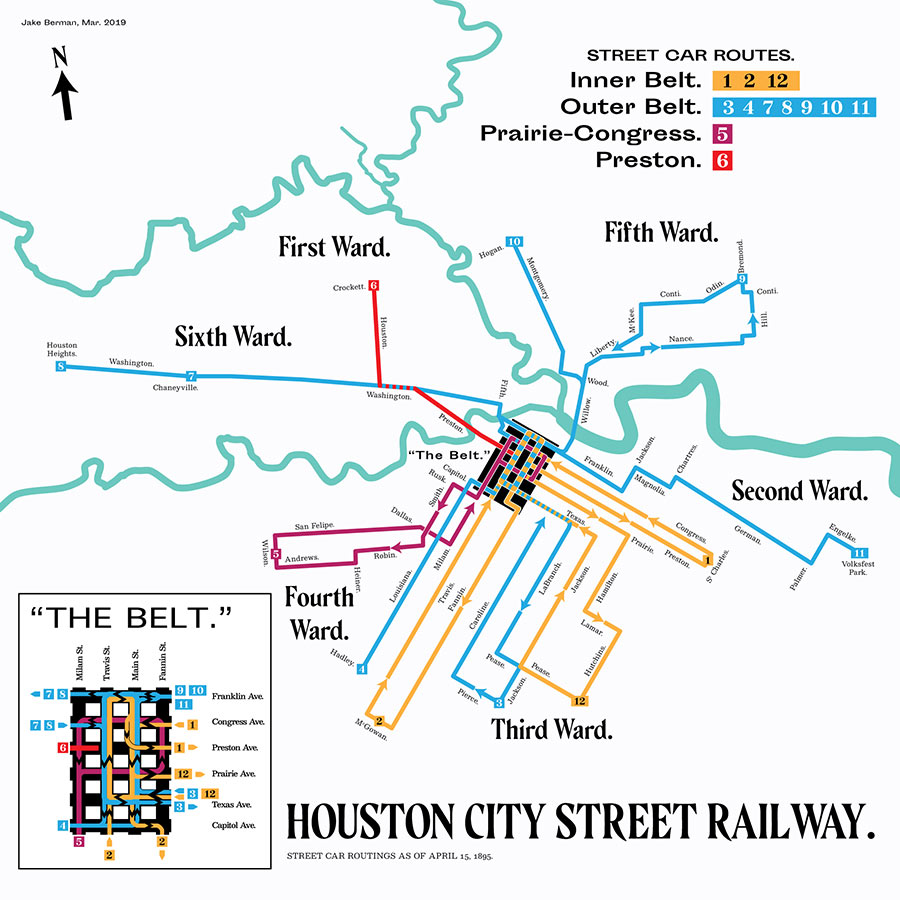COMMENT OF THE DAY: RAILROADED  “Southern Pacific (not Union Pacific, as one writer claimed), demolished this station in 1959. Critics may blame Houstonians for failing to rally and save the building, but the fact is that the modern architectural preservation movement didn’t start until the early 1970s, and even my architecturally hip home town of Chicago let some classic beauties like Louis Sullivan’s Stock Exchange slip away before public sentiment for preservation began to build. The first downtown railroad-station preservation-restoration project did not take place until 1973, when the Southern Railway’s vacant Terminal Station in Chattanooga was transformed into a restaurant and hotel complex.
If anybody has any photos of the interior of the SP station in Houston I would like to examine them for a book I’m writing about what happened to each of the big downtown stations in North America. SP’s Houston Station was designed by Texas’s most celebrated architect, Wyatt C. Hedrick, who also designed the Shamrock Hotel, the T&P station in Fort Worth, and dozens of admired hotels, factories and commercial buildings. Photos of his T&P station are all over the Internet but SP demolished his Houston station before anyone had a chance to make any good photos.” [F.K. Plous, commenting on The Secret Train Station Hidden Downtown] Illustration: Lulu
“Southern Pacific (not Union Pacific, as one writer claimed), demolished this station in 1959. Critics may blame Houstonians for failing to rally and save the building, but the fact is that the modern architectural preservation movement didn’t start until the early 1970s, and even my architecturally hip home town of Chicago let some classic beauties like Louis Sullivan’s Stock Exchange slip away before public sentiment for preservation began to build. The first downtown railroad-station preservation-restoration project did not take place until 1973, when the Southern Railway’s vacant Terminal Station in Chattanooga was transformed into a restaurant and hotel complex.
If anybody has any photos of the interior of the SP station in Houston I would like to examine them for a book I’m writing about what happened to each of the big downtown stations in North America. SP’s Houston Station was designed by Texas’s most celebrated architect, Wyatt C. Hedrick, who also designed the Shamrock Hotel, the T&P station in Fort Worth, and dozens of admired hotels, factories and commercial buildings. Photos of his T&P station are all over the Internet but SP demolished his Houston station before anyone had a chance to make any good photos.” [F.K. Plous, commenting on The Secret Train Station Hidden Downtown] Illustration: Lulu





The Texas & Pacific station in Fort Worth is far more impressive than anything we’ve had here, and even more impressive than Union Station in Dallas. Ditto the Post Office building next to it. I know Houston had a lot of railroad traffic here due to the cotton industry, but I guess not as many passengers as went through North Texas, hence smaller passenger stations.
Grand Central Station apparently only lasted 25 years. That’s remarkably short, even by Houston standards.
Wasn’t the original NYC rail station demolished as well? I should know this…
Yes, the late great Penn Station was demolished in the 60’s to make way for the horrid Madison Square Garden, ironically no longer on Madison Square. The loss of Penn Station sparked the NYC preservation movement that saved Grand Central Station (with an assist from Jackie O). Union Station was Houston’s finest station and it is now part of Minute Maid. Texas doesn’t really have great stations like the Northeast and Midwest. And I hardly think the architect of this demolished building you speak of was the greatest Texas architect of his time. I think you’re getting a little carried away.
Surely the guy taht does the Bayou City History blog for the Chron has come across some photos of this station and/or its demolition
MREctiom. The old Penn Station in New York was demolished; replaced with the monstrosity that is the current Penn Station. Grand Central Station was threatened with demolition as well, but people (including Jackie Kennedy Onassis) banded together to save it.
.
I’ve got to say I had no idea Houston had an old central train station. I mean, now it makes all the sense in the world – duh. But I just never thought about it. This is a really great Comment of the Day!
@Shannon – Geez, you’re annoying. A little carried away? Read his obituary on the page linked below. YOU may not think he was a gift to Texas but it seems that actual architects did. Funny that.
http://hometownbyhandlebar.com/?p=2980
Neither Penn Station nor Grand Central were the “original” NYC train stations, but they were the biggest and baddest, built in the early 20th century (train travel hit its peak sometime around 1917). Penn Station primarily served travelers to and from the mainland U.S., while Grand Central was more for suburban passengers in Long Island, Connecticut, and NY. Of course we know what happened to Penn Station. The tragedy of American futurism and wastefulness.
So I guess he was more famous and more respected than John Staub, Anton Korn, Albert Finn, Birdsall Briscoe. Staub has had at least two major books written about him. He’s considered one of the greatest residential architects. Finn designed the San Jacinto Monument among many great commissions. I’m not saying this architect wasn’t respected and competent, but the greatest Texas produced at the time; not even close.
@GL–Shannon knows everything about everything. He is smarter than anyone else in the world. Oh, and he ‘never’ gets carried away with anything. :o/
Houston’s original Grand Central Station from the 1800s was far more impressive than the Art Deco one that replaced it in the same spot. There are postcards of it all over the internet and the cast iron train shed was no different than the greatest European stations… http://absolutelymemorial.com/wp-content/uploads/2012/07/Grand-Central-Station.jpg
F.K. Plous is looking for photos of the interior of Houston’s S.P. art deco station. Some sources might be the libraries and the Architecture Departments at Rice, the University of Houston, the Houston Public Library, the Houston Museum of Fine Arts library and The Houston History Association. I was in that station quite a few times as a small child. The upper walls in the main waiting room were decorated with frescoes depicting events in Texas history. I don’t know the name of the artist who painted them, but William Reeves Fine Art is a gallery specializing in artists active in Texas before the middle of the 20thC and may be able to provide additional leads on the artist and photographs.
Fender said Hedrick, who was also a rancher, was cremated, his ashes scattered on his ranch near Hempstead north of Houston. Thus, there is no tombstone, no monument to Wyatt Cephas Hedrick. The buildings he designed are his monuments. That is class.
The MKT (the Katy) also had a station downtown at the same time, in front of what is now U of H downtown.
http://www.railpixs.com/mkt2/MKT_station_HoustonTx_50s.jpg
I thought it was a shame when all the spare tracks at the Amtrak station were torn out, leaving only two, but at least they have repaired the one canopy they have along the platform. I rode on a special train almost two years ago when the restored Santa Fe locomotives were delivered to the Railroad Museum in Galveston which was a lot of fun. On the return trip we arrived at the Houston Amtrak Station when the Sunset Limited was there…probably the only time in the last twenty years two passenger trains have been at that station at the same time I would guess. (except maybe the circus train)
…the “Southern Pacific” neon sign seen on top of the station is preserved by the Texas Railroading Heritage Museum, which is currently in storage waiting for a new Museum location.
http://www.texasrrmuseum.org/artifacts.htm